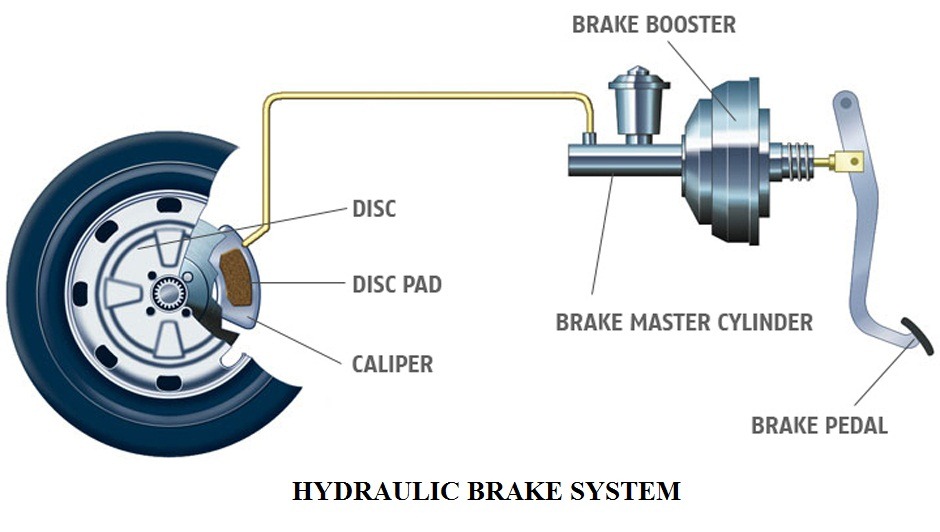Today is wisdom Wednesday! The day where we enlighten you a little more on the technical aspects of our project and how we challenge the future of urban mobility with these technological innovations. This week: they are essential to any car driver but we hope not to use them as often during our race: brakes! How do you stop a fast and light car at high speed? Our mechanical engineer Gerben tells you all about it!
Brake!
The brake system in a regular vehicle is basically a very simple system. Almost all modern cars are equipped with disc brakes. This means that they have a metal disc attached to the wheel, which rotates simultaneously with the wheel. By slowing down this disc the car’s speed is slowed down up until the point where it is finally brought to a halt. But how does this work exactly?

Braking on fluids?
The working principle of a disc brake is that friction arises die to the brake pads pressing against the brake disc. The disc, and all which is attached to it, is brought to a halt. Our braking system is hydraulic. Which essentially means that our system makes use of a fluid. An hydraulic system relies on the principle that all liquids have a very low compressibility. Air is compressible, which is why it is dangerous to have air in the hydraulic tubes of a disc brake.

A liquid, as mentioned before, has a very low compressibility. Making it useful to move or reposition things. This is exactly what happens in the braking system of a car. In the hydraulic disc brake pressure moves the liquid to the brake caliper. There, under influenced by this pressure, one or multiple pistons are pressed against the disc brake. This often occurs on both sides of the disc brake, ‘sandwiching’ the disc brake!
Breaking down the brake system!
A simplified brake system exists of several components. When keeping in mind the order in which they appear from driver to wheel there is; the brake pedal, the brake cylinder, the brake caliper, the brake pads and the brake disc. When you hit the brake pedal, the piston within the brake cylinder is moved. This piston presses against the fluid in the brake system. This fluid moves itself from the cylinder to the brake caliper, which is mounted over the brake disc, via the hydraulic tubes. The brake caliper is fixed in the car and therefore doesn’t rotate along with the wheel. The brake caliper is also equipped with pistons, but this time these pistons press against the brake pads. Brake pads are made of friction material, which leads to friction with the brake disc. The fluid which has been moved by the brake pedal now presses against the pistons in the brake caliper. These pistons then press the brake pads against the brake disc. The brake caliper and the brake pads are fixed while the brake disc moves with the wheel. Meaning that the brake disc is also brought to a halt. Due to the friction the movement of the brake disc is converted in warmth. Since the brake disc rotates along with the wheel, the wheel itself will also be brought to a halt which causes our solar car to brake! But don’t worry we will only hit those brakes after we’ve crossed the finish in Adelaide!
Wisdom Wednesday recap:
- By slowing down a metal disc mounted behind the wheel of the car, the car can be brought to a halt.
- Our breaking system is hydraulic, meaning that we use a fluid within the brake system.
- A lot of components are included within the brake system; the brake pedal, the brake cylinder, the brake caliper, the brake pads and the brake disc. Only when these parts work together they are able to bring the car to a halt!
Curious as to how our the team is progressing and which technical aspect will be explained next? Subscribe to our newsletter Red News, and follow us on Facebook, LinkedIn, Twitter and Instagram.
Do you also support the development of new innovative technologies and want to contribute to the development of the car of tomorrow? You can! Go to www.solarteam.nl/adoptacell and adopt a solar cell. With which you support us in showing the world the power of solar energy!

Recent Comments